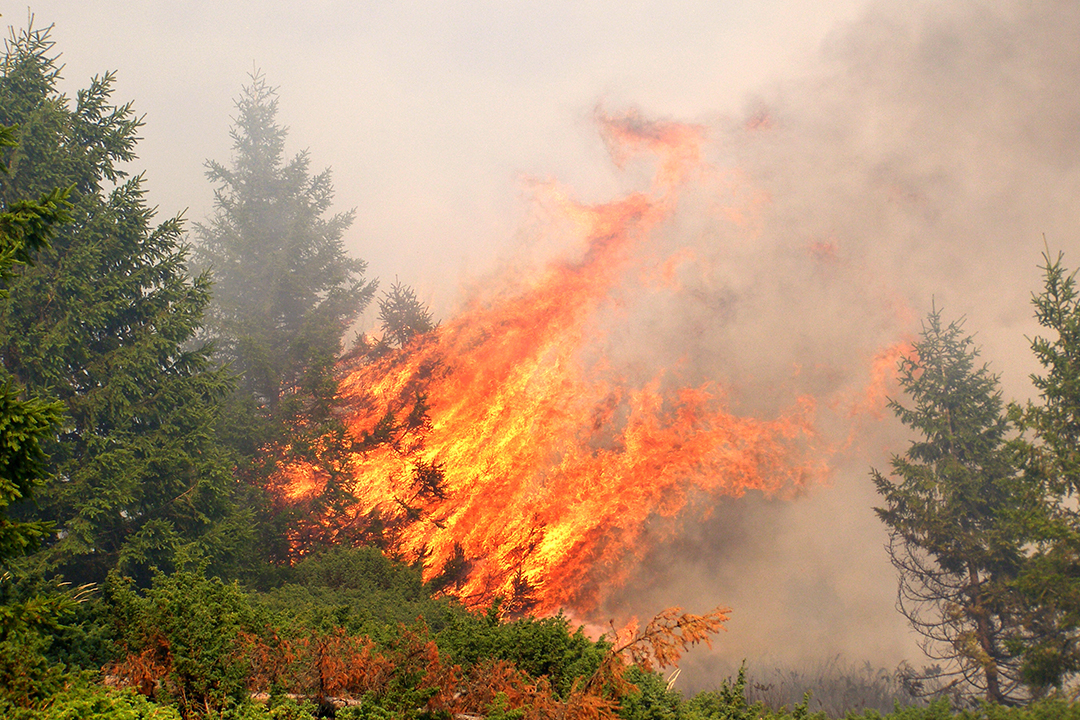This past year, raging wildfires have burned thousands of acres of land, ravaged homes, and claimed lives. The staggering toll of destruction underscores the importance of predicting when and how the next wildfire might occur—a feat Assistant Professor of Geography Michael Mann is helping to tackle.
By examining statistical data of California’s wildfires dating back more than 60 years, Mann has created a model that can forecast the likelihood of wildfires throughout the state from now until the year 2050. Predications are based on climate variations, indicators of tree and plant growth, population density, and potential ignition sources within each one kilometer area.
“California makes a great test case for use of this model because the ecosystems that exist within its borders are representative of what’s found in the rest of the country,” said Mann, whose research was funded by the Nature Conservancy. “Eventually, I hope to build a model that can forecast wildfire occurrences in other parts of the nation.”
Not surprisingly, Mann predicts wildfires will not only increase in number but also in both their extent and strength. Climate change and biological factors will play a critical role because increased energy in the climate system could dramatically shift the current patterns of rainfall. These shifting patterns will control which areas are more likely to experience future fires. Counter intuitively, both wetter and drier conditions can create more fires, depending on the ecosystem you begin with.
For example, when a normally “wet” area with abundant vegetation—such as the rainforests of the Northwest—experience more droughts, the potential for fire increases because the now dry, dead foliage or “biomass” becomes a fuel source, explained Mann. Conversely, if a formerly barren landscape, like the semi-arid deserts of the Southwest, incurs small increases in precipitation, plant life will follow. This denser plant life will transition to fuels for wildfire as these intensely hot landscapes are still expected to experience periodic and intense droughts.
“Global warming is happening, but it is not clear if it’s going to get wetter or drier in any given location,” said Mann. “Regardless, the overall trend is that as temperatures increase, we can expect to have more wildfires.”
Humans are responsible for igniting over 80% of wildfires in California—often caused by dropped cigarettes, downed power lines, and unattended campfires—and bear the lion’s share of its consequences. Drawn by natural amenities, a ballooning housing sector, and enormous state and federal housing subsidies, Californians have rushed to build on the fire-prone edges of urban and natural systems. Consequently, between 1999 and 2011, the state reported an average of $160 million dollars in annual damages, with nearly 13 thousand structures destroyed in the areas designated as fire jurisdictions, which cover less than one third of the state. During this same time period, the California and the U.S. Forest Service reported combined spending of more than $5 billion on wildfire suppression.
“Fire managers are at the mercy of expensive and damaging cycles: They are required to suppress fires because of the people who live in fire-prone area, but face more fires because of the people living there,” said Mann. “In the end, you have more frequent and more expensive fires.”
Ironically, the success of firefighters in extinguishing fires over the past 50 to 80 years has actually increased the present fire risk.
“We’ve put out the majority of wildfires as quickly as possible, creating huge amounts of standing biomass, which only exacerbates the problem,” Mann explained. “Meanwhile, in the U.S., prescribed burns, which can mitigate this problem, are infrequent because of the risks they pose to neighboring communities.”
To assist in predicting the total cost and consequence of future fires, Mann also examined historical records of the damage and fatalities resulting from California wildfires. His model estimates that damages will more than triple by midcentury, increasing from $160 million to nearly $500 million annually in state responsibility areas. “This information is critical to policy makers, planners, and fire managers, to determine the risks of wildfire to human system.


